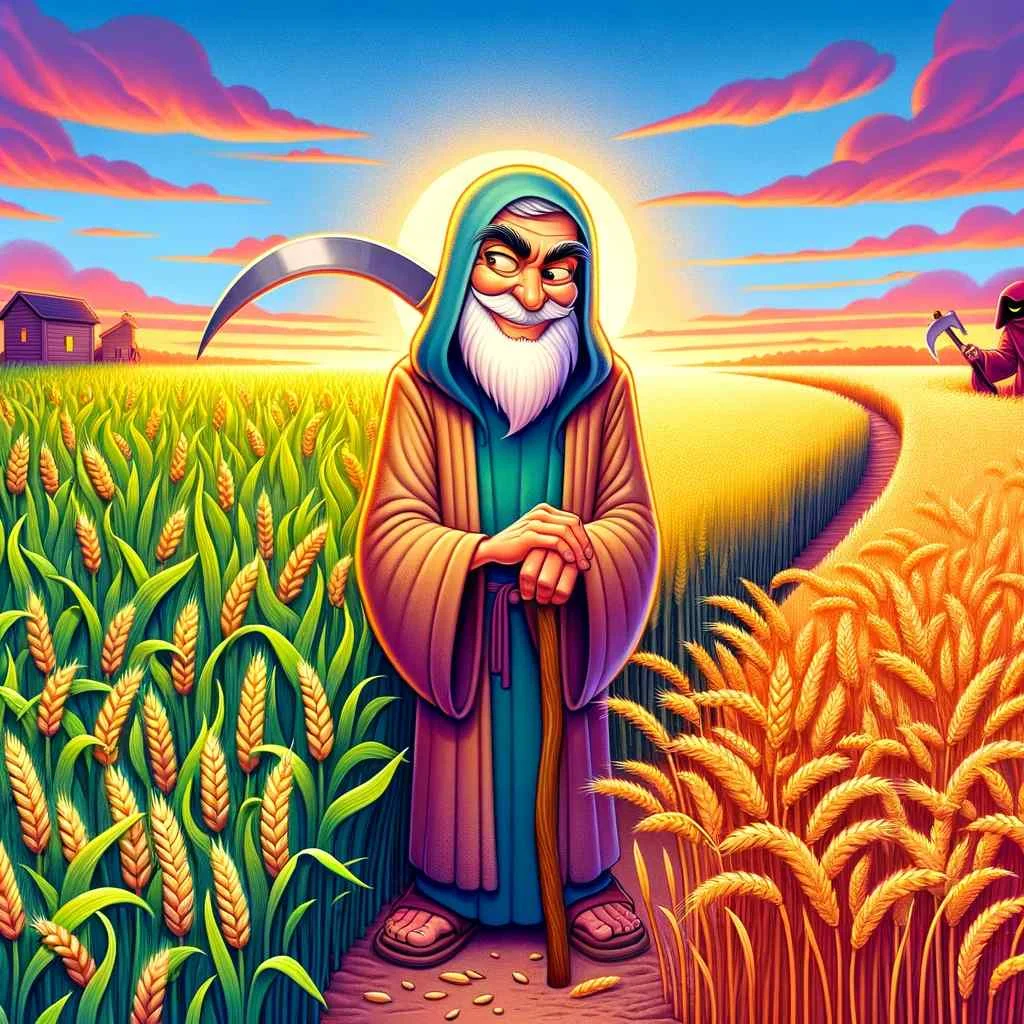Here is my retelling of the Parable of the Wheat and Tares1 staying true to its biblical essence. It focuses on the coexistence of good and evil, and the final judgment, but uses more narrative details for modern engagement and kids.
It aims to preserve Jesus’ profound teachings while enhancing comprehension and reflection through a more descriptive storytelling approach.
In a time long past, in a land graced by the touch of the divine, there lived a farmer of great wisdom and patience.
His fields were a testament to his dedication, each furrow straight as an arrow, every seed sown with purpose. The crops he raised were not just plants but symbols of his connection to the earth and the heavens.
Among these, wheat held a place of honor, for it was the bread of life, sustaining the body as well as the spirit.
One evening, under a sky painted with the soft hues of twilight, the farmer sowed his wheat with care, each grain a promise to the future. But as the world slumbered, an envious neighbor, shrouded in the bitterness of unfulfilled desires, crept like a shadow across the field.
With malicious intent, he sowed tares among the wheat, weeds that bore a deceitful resemblance to the wheat in their youth but were worthless and toxic at maturity.
As the sun’s first rays awakened the world, the wheat and tares sprouted together, their roots entwining in the earth’s embrace.
Time passed, and the servants of the farmer noticed the unwelcome plants mingling with the wheat. They rushed to their master, their hearts heavy with concern. “Master,” they implored, “did you not sow good seed in your field? From whence then does it have tares?”
The farmer, understanding the heart of the matter better than any, replied with a calm born of deep faith, “An enemy has done this.”
The servants, eager to protect the harvest, offered to uproot the tares. But the farmer, in his wisdom, stayed their hands.
“No,” he said, “lest while you gather up the tares, you also uproot the wheat with them. Let both grow together until the harvest. At that time, I will say to the reapers, ‘First gather together the tares and bind them in bundles to burn them, but gather the wheat into my barn.'”
And so, the wheat and the tares grew side by side under the watchful eye of the farmer, until the harvest came. The reapers, guided by the wisdom of their master, separated the true from the false, the valuable from the worthless.
The wheat was gathered in the barn, a symbol of righteousness and the fulfillment of promises made under the twilight sky. The tares, bound and removed from the field, served as a reminder of the presence of adversity and malice in the world, but also of the triumph of wisdom and patience over such trials.
Moral of The Story
This parable, as told by the wise farmer, transcends the boundaries of time and place, reaching into the hearts of all who hear it.
It teaches us that evil and good may grow together in this world, indistinguishable at times until the end.
It cautions patience and discernment, urging us to wait for the right moment to act, lest in our haste we destroy the good along with the bad.
It is a reminder that judgment belongs not to the impulsive but to the wise, who see beyond the present turmoil to the harvest that awaits.
Also Read: The Lion Who Became a Sheep
Remarks
The Parable of the Wheat and Tares is found in the Gospel of Matthew, chapter 13, verses 24-30, in the New Testament of the Bible.
Jesus provides an explanation of this parable to His disciples in verses 36-43 of the same chapter.
- “Tares” refers to weeds that grow amongst crops, particularly those that are difficult to distinguish from the desired plants in the early stages of growth. The term is most famously used in the Parable of the Wheat and Tares in the Bible, where “tares” represent a type of weed called bearded darnel (Lolium temulentum), which closely resembles wheat in its early growth stages. In this parable, the tares are sown by an enemy among the wheat, symbolizing the presence of evil or sinners amongst the righteous in the world, and the challenge of distinguishing between them until the time of judgment or harvest. ↩︎

